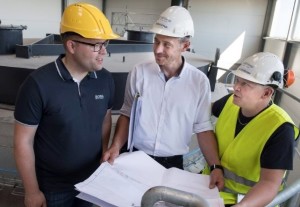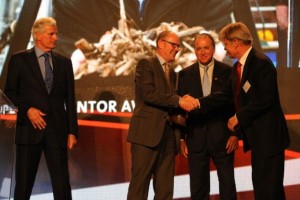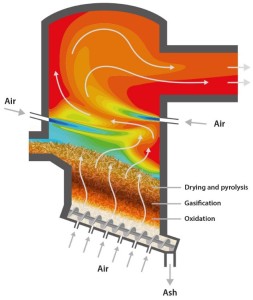The Horizon 2020 Dall Energy Biomass System (DEBS) Project has developed a new, disruptive biomass furnace that reduces dust and particle emissions by more than 90%. It can easily meet the demands in the new EU emission directive and offer a whole new set of other benefits compared to current state-of-the-art, the well-known grate combustion technology. These main benefits are:
- lower investment in plant – No bagfilter and simpler furnace design with very few moving parts;
- lower maintenance costs (no technical difficulties, low power consumption);
- very wide load window (fast and easy modulation between 10% and 100% load without problems);
- reduction of fuel cost as the technology is very fuel flexible, enabling conversion of a wide range of low-value fuels such as wet and dry biomass, organic waste streams, willow, pellets, etc. in the same furnace.
Challenge and solution
The energy production from biomass is CO2 neutral since biomass is renewable and it can be stored and used when other sources of energy are scarce. A new EU directive tightens emission values and today’s technologies cannot meet the demands set forth by the directive if not through the addition of expensive emission reduction systems to their solutions.
The innovation
The new directive will be a strong driver for Dall Energy, as its technology meets these new demands at no extra cost. The Dall Energy Biomass System provides high efficiency and high fuel flexibility with very low emissions and significantly reduced cost of energy.
The Dall Energy furnace
As the imagine shows, the bio-fuel is fed on top of the gasification bed. In the top layer the fuel is dried by radiation for gas-combustion above and by hot gases from the gasifier below. In the top layer the gas speed is very low and therefore extremely few dust particles are let into the gas combustion part, thus resulting in very low dust emissions.
At the bottom of the gasifier, the air is let into the ash layer. Above the ash layer is the gasification zone, where the oxygen in the air reacts with the carbon in the biofuel, which is then converted into hot gas and clean ash.
The gas is combusted above the gasification bed in two stages, which result in very low NOx emissions. Due to very good mixing and the right temperature (950oC), all organic components are combusted, thus resulting in extremely low CO2 emissions.
Development and demonstrations
Dall Energy was founded in 2008, and during the first 5 years was focused on process verification and a demonstration plant. The pilot unit was built in 2009-2010 and followed by a demonstration plant in 2010-2012. Hereafter was three semi-commercial plants built and put into operation, so the number of operation plants is now 4:
- 2 MW steam production and VOC destruction as Warwick Mills, USA
- 8 MW heat for Bogense district heating company, Denmark
- 9 MW heat for Sønderborg district heating company, Denmark
- 5 MW heat & 1 MW power for Sindal district heating company, Denmark
During these projects, the properties of the Dall Energy biomass furnace have been verified:
- 20-60% moisture in fuel
- NOx : 150 mg/Nm3
- Dust directly out of Furnace <30 mg / Nm³
- Dust in stack (after flue gas condensor) <15 mg / Nm³
- CO: 0-5 mg / Nm³• 20% -100% load
- Fuels: Wood chips, garden / park waste
Awards & recognitions
Due to the impressive results, the Dall Energy biomass furnace has received numerous awards and recognitions including:
- Innovation price, Spain 2010
- European Inventor of the year, 2011
- CNN Feature 2013
- New York Time, 2015
- Bluetech Award, China, 2017
First CHP plant in Sindal, Denmark
During 2018 the first CHP (Combined Heat and Power) plant was built in the Danish town of Sindal. The new plant was commissioned in summer 2018 – with official opening on September 15th, 2018 by the Danish Minister for Energy, Utilities and Climate, Lars Christian Lilleholt.
The Sindal plant consists of a gasifier, a gas burner, a thermo-oil boiler, a flue gas condenser and an ORC-turbine plant. In the gasifier the conversion to gas occurs in a slow gasification process, after which the gas is burned. Due to the low speed of gas and a good mix of gas and air, the level of dust, CO2 and Nox is very low after the gas combustion. Therefore, no flue gas filters are needed. The plant does not have cyclones or electric filters. The flue gas condensation unit increases the thermal efficiency by 25% and it also removes the particles of the flue gas without extra cleaning. The very low emissions means that the plant has only a short chimney, which is integrated into the building in a way that appears less dominant.
20 MW Furnace in France
Dall Energy is currently preparing a 20 MW Furnace for Dalkia in France. This is a very interesting project for Dall Energy both because Dalkia can become a major client, and for the size of the plant: 20 MW is double the size of previous plants. The Plant shall be commissioned during 2020.
Acknowledgments
The technological development has been supported by R&D programs. A special thanks shall be given to EUDP (Funding from the Danish Energy Agency) and the Horizon 2020 program funded by the European Commission.


Text by Jens Dall, Managing Director of Dall Energy, and Helene Elmgren



